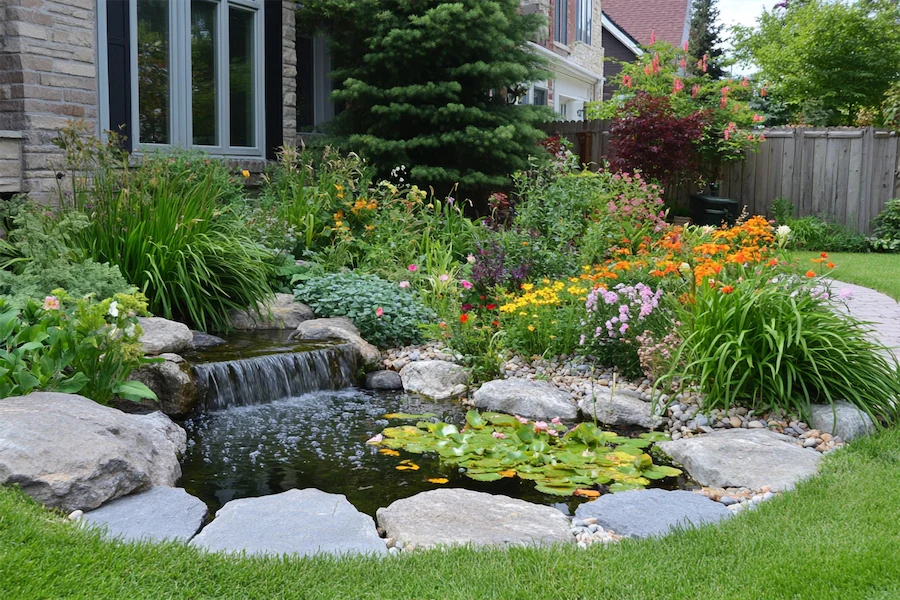A Reflective Pond Garden is a thoughtfully designed outdoor space centered around a still water feature that mirrors its surroundings, creating a serene and contemplative atmosphere. These gardens have been integral to various cultures, notably in Chinese and Japanese traditions, where water symbolizes tranquility and reflection.
History and Origins of Reflective Pond Gardens
Reflective ponds have been prominent in classical Chinese gardens, serving as central elements that embody lightness and communication. The water’s reflective quality is believed to connect the garden with the infinite, enhancing the sense of space and harmony.
In Japanese garden design, ponds are essential, often representing natural landscapes in miniature. The reflective surface of the water is used to mirror the sky and surrounding features, fostering a deep connection between the viewer and nature.
Key Features of Reflective Pond Gardens
- Still Water Surface: The primary characteristic is a calm, undisturbed water surface that acts as a mirror, reflecting the sky, plants, and architectural elements.
- Minimalist Design: To maintain clear reflections, these ponds typically lack fountains, waterfalls, or aquatic plants that could disrupt the water’s surface.
- Defined Edges: Crisp boundaries, often using materials like stone or metal, frame the pond, enhancing its mirror-like quality.
- Shallow Depth: Reflective ponds are usually shallow, around 30-40 cm deep, to promote stillness and clarity.
Applications of Reflective Pond Gardens
- Aesthetic Enhancement: In residential settings, reflective ponds add elegance and a focal point that enhances the overall garden design.
- Cultural and Spiritual Spaces: These ponds are integral in temples and meditation gardens, providing a peaceful environment for contemplation.
- Public and Memorial Spaces: Reflective ponds are often used in memorials and public gardens to evoke introspection and solemnity.
Considerations When Designing a Reflective Pond Garden
- Location: Select a site that is sheltered from wind to maintain a smooth water surface and prevent debris accumulation.
- Water Clarity: Implement filtration systems or regular maintenance routines to keep the water clear and free from algae.
- Safety: Ensure the pond is designed with safety in mind, especially if children or pets are present, by incorporating gentle slopes or barriers.
- Maintenance: Regularly remove debris and monitor water quality to preserve the reflective quality of the pond.
Conclusion
Reflective Pond Gardens blend simplicity and elegance, creating spaces that encourage reflection and a deeper connection with the environment. By thoughtfully integrating these water features, one can transform a garden into a tranquil retreat that mirrors the beauty of its surroundings.
